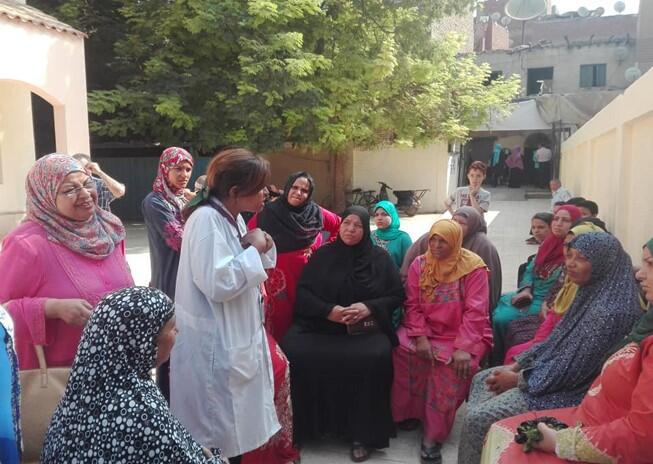The EU Support to Egypt’s National Population Strategy project is set to make family planning and post-partum services more accessible through enhancing the role of outreach workers and community activities.
Since the project’s inception in April, the Ministry of Health and Population, with technical support from UNFPA and funding from the EU, worked to build the capacity of outreach workers in three governorates on the use of electronic devises and effective utilization of audiovisual materials in their home visits, especially for illiterate women.
As a result, 27 percent, 20 percent and 66 percent of outreach workers in Qena, Minya, and Suez governorates respectively have been capacitated to utilize the tablets in disseminating information and family planning messages.
Two community outreach campaigns were also held in Alexandria, featuring 17 community awareness sessions. These campaigns were accompanied by mobile clinics and were able to reach 7992 beneficiaries, among whom are 722 new beneficiaries.
During this campaign, 405 IUDs and 53 subdermal implants “Implanon” were dispensed.
The supervision and reporting form of outreach workers was also updated under the project to include geographic mapping, number of women in catchment areas, and a feedback section to ensure effective follow-up by outreach supervisors.
The updated comprehensive outreach form was disseminated to 15 governorates focusing on the developed key performance indicators to evaluate the outreach work.
The “EU support of Egypt's National Population Strategy” kicked off in April 2018 with the support of an EU-grant of 27 Million Euros.
The project aims at increasing the use of voluntary, rights-based family planning through improved supply of family planning services and commodities, increased demand for family planning, and enhanced governance for implementation of the National Population Strategy. It will ultimately benefit Egyptians of reproductive age who will have more choices regarding the size of their families, as well as the timing and spacing of children.


